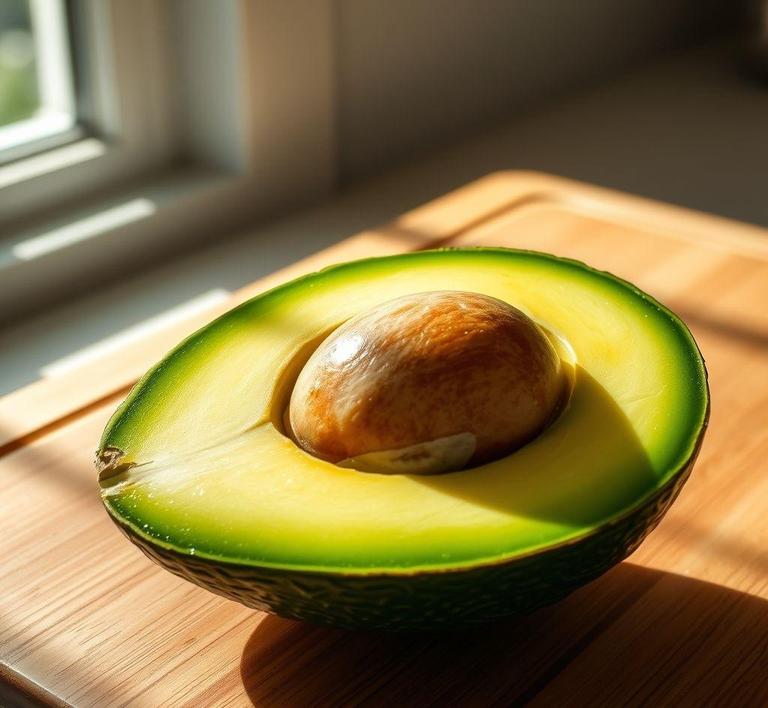If you’ve ever had some leftover avocado and wondered whether you can refreeze it for later use, you’re not alone! Refreezing avocado might seem tricky because its texture and flavor can change after being frozen. However, with the right techniques, you can preserve the creamy goodness for future smoothies, sandwiches, or dips. In this guide, we’ll walk you through the best methods for refreezing avocado, explain how to avoid the common pitfalls, and give you some handy tips on how to enjoy your frozen avocados without sacrificing quality. So, let’s dive into the world of refreezing avocado and make sure you’re not wasting any of that tasty green goodness!
Can You Refreeze Avocado?

Refreezing avocado is a topic that often sparks curiosity, mainly because avocados are delicate fruits that can change significantly in texture and flavor with freezing and thawing. Typically, freezing is not the go-to preservation method for avocados, mainly due to their high water content, which can alter their structure when frozen and thawed. But can you refreeze them? The simple answer is yes, but there are a few caveats to consider.
When avocados are frozen, the cell structure within the flesh breaks down, which leads to a mushier texture once thawed. This is primarily due to the formation of ice crystals within the fruit. Freezing already-thawed avocados presents a challenge because once the cells have been disrupted once, they are more prone to degradation with each subsequent freeze-thaw cycle.
However, if you’ve thawed your avocado properly and haven’t allowed it to sit out for too long at room temperature (which could encourage bacterial growth), refreezing is possible. This process is safe from a food safety perspective, as long as the avocado has been kept at a consistently cold temperature during both the initial freeze and the thawing stage.
How To Refreeze Avocado?
If you’ve decided to refreeze your avocado, there are steps you should follow to ensure that the process is done correctly and safely. Here’s a detailed guide on how to go about it:
-
Check the Condition of the Avocado:
Before refreezing, make sure the avocado was thawed properly, and check its appearance and smell. If it has developed any off smells or signs of spoilage, such as mold or an unusual texture, it’s best not to refreeze it. Safety always comes first.
-
Drain Excess Moisture:
After thawing the avocado, you might notice excess liquid that has accumulated. It’s important to drain this moisture before refreezing, as the added liquid can make the avocado even mushier once it is frozen again. You can gently pat the avocado flesh with a paper towel or use a strainer to get rid of any excess liquid.
-
Prepare the Avocado:
If you haven’t already, consider cutting the avocado into halves, quarters, or smaller chunks, depending on your future use. Another option is to mash the avocado if you plan on using it for guacamole or smoothies. Slicing or mashing the fruit allows for more consistent freezing and easier thawing.
-
Wrap or Seal:
Once the avocado is prepped, wrap it tightly in plastic wrap, or place it into an airtight container or a freezer bag. If you’re using a freezer bag, try to remove as much air as possible to prevent freezer burn. To avoid freezer burn, ensure the avocado is stored in a way that minimizes exposure to air and moisture.
-
Label and Date:
This is a critical step to keep track of how long the avocado has been frozen and to make sure you use it within a reasonable time frame. Frozen avocados can stay good for up to 3 months, but it’s best to use them sooner to enjoy the best flavor and texture possible.
-
Refreeze:
Finally, place the wrapped or sealed avocado into the freezer. Keep in mind that the avocado should be stored in the coldest section of your freezer to ensure it freezes quickly and evenly.
Quality Impact
Refreezing avocado can significantly impact its quality. While it is safe to do so, the texture and flavor will likely suffer from the process, which is important to note depending on how you plan to use the avocado.
-
Texture Changes:
Avocados have a high fat content and a soft, creamy texture, which is what makes them so appealing. When frozen, the water in the fruit forms ice crystals, which rupture the cell walls and disrupt the smoothness of the flesh. Once thawed, the avocado may become mushy or watery. Refreezing an avocado compounds this effect, as the structure has already been altered, making it more prone to becoming overly soft and unappetizing. The result may not be ideal if you’re looking to slice the avocado or use it for visually appealing dishes like salads or sandwiches.
-
Flavor Deterioration:
While the flavor of the avocado can be less affected than the texture, refreezing may result in a slight decrease in taste quality. Over time, the fruit might lose some of its natural, creamy flavor and develop an off-taste due to oxidation or freezer burn. When avocados are frozen multiple times, the compounds responsible for their fresh flavor can break down, leading to a more bland or slightly sour taste.
-
Loss of Nutrients:
Freezing and thawing can also affect the nutritional content of the avocado, although not dramatically. Some water-soluble vitamins, such as vitamin C, can degrade over time due to exposure to air and changes in temperature. However, the primary nutritional benefits of avocados, such as healthy fats and fiber, remain relatively stable, even after multiple freezing and thawing cycles.
-
Visual Appearance:
Thawed and refrozen avocados often lose their bright green color and can become a little brown or discolored. This is due to oxidation, which happens when the avocado’s flesh is exposed to air. The browning can be minimized by storing the avocado in an airtight container with a bit of lemon juice, but it may still occur.
Refreezing avocado is possible, but it’s not without consequences. The most noticeable impact will be on texture and flavor. Once frozen and thawed, an avocado’s creamy, smooth consistency becomes compromised, leading to a mushier texture. If you plan to refreeze your avocado, it’s best suited for uses where texture isn’t as critical, such as in smoothies, guacamole, or sauces.
While refreezing doesn’t pose a significant food safety risk as long as the fruit has been properly stored and hasn’t been left at room temperature for too long, the quality will degrade each time the fruit goes through a freeze-thaw cycle. For the best experience, it’s advisable to freeze avocados once and use them within a few months to avoid overcomplicating their quality.
If you want to enjoy avocados at their best, it’s best to freeze them once and use them quickly after thawing. So, while you can refreeze avocado, it’s not recommended for anyone looking to preserve the fruit in its freshest and most appetizing state.
Is It Safe To Refreeze Avocado?
Avocados, with their creamy texture and versatile flavor, are a popular addition to many dishes. But like other fruits, they’re sensitive to changes in temperature. The question of whether it’s safe to refreeze avocado is more common than you might think, especially given that avocados often ripen faster than we can use them. While it’s generally not recommended to refreeze fresh avocado, the answer depends largely on how the avocado is stored and its condition prior to refreezing.
Refreezing an avocado can be safe in some cases, but there are a few important factors to consider. First, it’s important to know that avocados, when frozen, experience cell breakdown. The high water content in avocados causes ice crystals to form during freezing, which disrupts the cell structure and leads to a change in texture. When you refreeze avocado, the process of freezing and thawing can cause even further degradation of the fruit, making it mushy and watery once thawed. However, if the avocado has been properly stored before freezing and is still in good condition, refreezing can be done with some minor texture compromise, though it might not retain its original freshness.
If you’re using frozen avocado for guacamole or smoothies, where the texture is less important, refreezing can be an acceptable option. The flavor tends to remain intact, but the texture is what takes the biggest hit. So, while it’s not inherently unsafe to refreeze avocado, you need to be realistic about the quality of the fruit after the process.
Signs That Avocado Should Not Be Refrozen
Knowing when an avocado is not suitable for refreezing can save you from wasting your fruit and time. Here are some key signs to look for:
- Mushy Texture: If your avocado has already been frozen and thawed, and now it’s mushy or overly soft, it’s probably too far gone for a second freeze. Refreezing this type of avocado would likely worsen the texture further, making it unappetizing when you finally defrost it again.
- Off Smell: Any sour, fermented, or rancid odor indicates that the avocado has begun to spoil. While freezing can preserve the fruit’s freshness for a time, once it’s past its prime, refreezing will do little to revive it. If it smells bad before freezing or after thawing, it’s best to discard it.
- Discoloration: Avocados that have turned brown or black from oxidation should not be refrozen. While browning doesn’t necessarily mean the fruit is spoiled, it’s an indication that its quality has deteriorated. Refreezing an already discolored avocado can result in a further loss of flavor and texture.
- Sliminess or Mold: Any visible mold or slimy texture is a clear sign that the avocado is no longer good. Mold can form even in frozen fruits, and refreezing moldy avocado can worsen the issue, making it unsafe to eat.
Common Refreezing Mistakes
Refreezing avocado can seem like a practical solution to reduce waste, but there are several mistakes that people commonly make when handling this process:
- Not Prepping Properly: One of the biggest mistakes is not preparing the avocado correctly before freezing it. Simply tossing whole or halved avocados into the freezer can result in uneven freezing and a mushy texture. To preserve the avocado better, it’s recommended to scoop the flesh out, mash it with a little lime or lemon juice (to prevent browning), and store it in an airtight container or freezer bag.
- Freezing Avocado When It’s Overripe: Avocados that are too ripe or mushy before freezing will only get worse after thawing and refreezing. Freezing an already overripe avocado leads to poor results, so it’s essential to freeze avocados at the peak of their ripeness.
- Storing with Skin and Pit: Some people freeze whole avocados, including the skin and pit. While this might seem like an easy solution, the skin and pit don’t freeze well and can contribute to a mushy and unappetizing texture once thawed. Always remove the skin and pit before freezing.
- Leaving It Exposed to Air: Oxygen is an enemy of avocado. Without proper sealing, air can cause the fruit to brown or even spoil, even in the freezer. If you’re planning to refreeze an avocado, ensure it’s stored in a vacuum-sealed bag or an airtight container to prevent oxidation.
- Refreezing Multiple Times: Refreezing avocado multiple times is a mistake that many people make when they try to extend the shelf life of frozen fruits. Each time the avocado is frozen and thawed, its texture deteriorates. Refreezing multiple times exacerbates this issue, resulting in a mushy, unpalatable texture and diminishing its flavor.
Tips And Tricks
If you want to get the best results when refreezing avocado, here are some tips and tricks to help:
- Lemon or Lime Juice: To prevent browning and maintain flavor, add a little lemon or lime juice to mashed avocado before freezing. The acid helps slow down oxidation and can keep the avocado looking fresher for longer.
- Use an Airtight Container or Freezer Bag: Make sure that you’re storing your avocado in an airtight container or freezer-safe bag. This will help prevent freezer burn, which can affect the texture and flavor of your avocado. You can also remove excess air from freezer bags by using a vacuum-sealer or pressing out the air manually.
- Freeze in Portions: If you’re planning to use avocado in smoothies, guacamole, or spreads, freezing in small portions can save you from defrosting more than you need. You can freeze mashed avocado in ice cube trays or small containers for easy access.
- Avoid Refreezing if Already Thawed: If you’ve thawed avocado once, avoid refreezing it. The freezing process causes cell breakdown, and repeating this can result in a significant loss of texture and flavor.
- Add to Smoothies or Sauces: If your avocado has lost its texture from freezing, consider using it in smoothies, sauces, or soups where a creamy consistency is desired, but a slightly altered texture won’t be as noticeable.
Conclusion
In conclusion, while it is safe to refreeze avocado, it’s not always the best choice if you want to preserve its original texture and flavor. Freezing can cause the fruit to become mushy due to its high water content, and refreezing can exacerbate this issue. However, if you store the avocado properly before freezing and take steps to minimize oxidation, you can refreeze avocado with minimal loss in flavor, especially if it’s being used for dishes like guacamole or smoothies where texture is less important.
The key to success when refreezing avocado is preparation-remove the skin, pit, and store it properly. Avoid freezing overripe avocados or refreezing multiple times, as this will only degrade its quality. If your avocado starts to show signs of spoilage, it’s best not to refreeze it. With a little care and the right techniques, you can extend the life of your avocados and minimize waste, enjoying their creamy goodness in your favorite dishes year-round.


